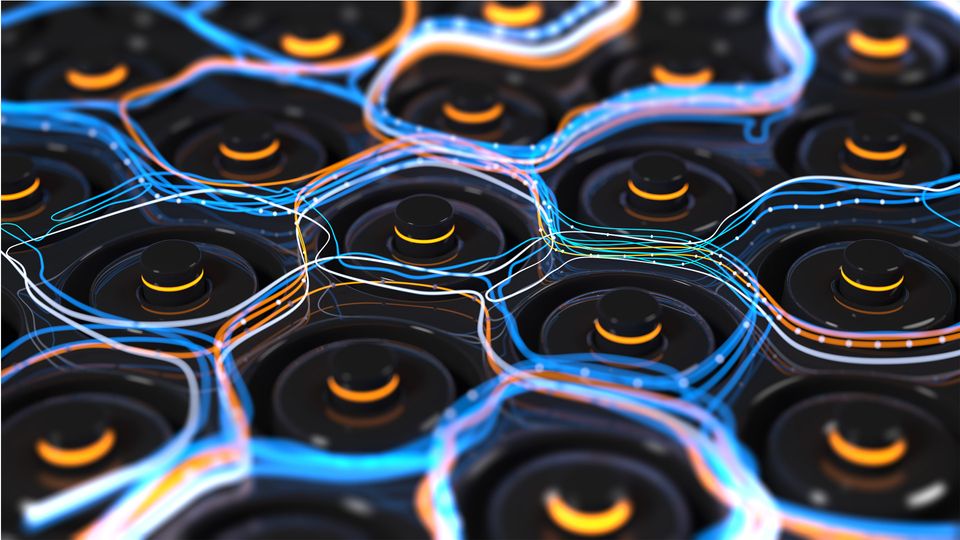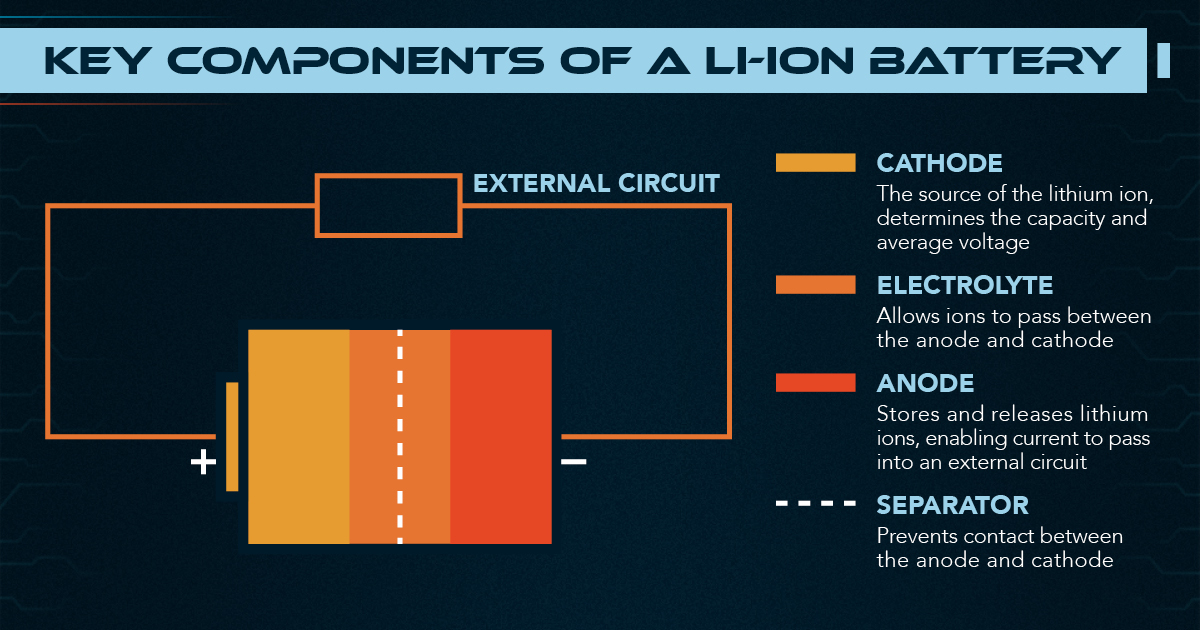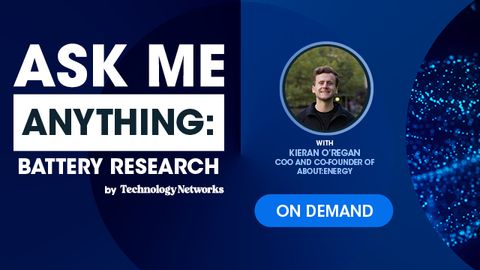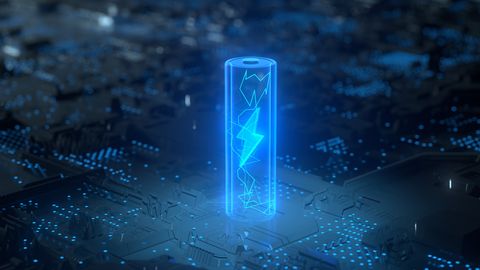Explore the World of Battery Research With Kieran O'Regan
Efficient performance and sustainable development could be the future of battery technology.

Complete the form below to unlock access to ALL audio articles.
Kieran O'Regan, COO and co-founder of About:Energy, works to bridge the gap between universities and industry and accelerate the development of new battery technologies. He applies the latest battery research to commercial battery development, allowing companies to rapidly bring cost-effective products to market.
Technology Networks invited Kieran O'Regan to an Ask Me Anything session to answer your questions about this incredible technology. These are just some of the questions that we asked Kieran, click below to watch the full AMA.
Lucy Lawrence (LL): What is a battery made of, and how does it work?
Kieran O'Regan (KO): In the research community, we often use a cake analogy to describe a battery. A battery is made of different components, which you might not necessarily see because they’re always hidden away. Batteries have three main components; a positive electrode, a negative electrode and a separator, which contains a liquid electrolyte. That's why we think of it as a cake structure – you have two layers of electrodes separated by a “filling” (the liquid electrolyte). When you charge and discharge a battery, ions move between those layers, and that is what either stores or removes electricity. The separator is important for electrically insulating those two layers but also facilitates ion transfer.

Figure 1: Schematic illustration of the four components of a Li-ion battery. Credit: Technology Networks, adapted from Battery Materials Analysis.
LL: Which type of battery is better for the environment, rechargeable or disposable?
KO: I would say rechargeable because the aim is to reduce, reuse and recycle. You can buy either primary or secondary batteries. Primary batteries are the ones that we're all familiar with: the alkaline batteries that are used in Game Boys or TV remotes. Traditionally, we would use them once and then throw them away, which is very wasteful. Those batteries may or may not be recycled, and a lot of those materials might not be reclaimed. Thus, there's a huge carbon cost to that process.
The most sustainable choice is always using rechargeable batteries that can be reused hundreds or even thousands of times. Because we are used to regularly needing to charge mobile phones there is a misperception that batteries don't last a long time. The batteries coming into electric vehicles and other applications will have a very long lifetime.
It's always more sustainable to choose something that is rechargeable because, if it's used properly, it can last a long time.
Then we can delay when we recycle or dispose of it. Even recycling has some negative carbon implications, so reuse is always the first choice.
LL: Why aren’t lithium-ion batteries easily recycled?
KO: There are two main reasons: logistics and the technology. For instance, lead–acid batteries are easily recycled because we are used to handling them in specific situations. When a car mechanic changes a lead–acid battery, it will almost always end up being taken to a dedicated recycling plant. But because lithium-ion batteries are used in so many different applications, it is easy for those batteries to be improperly disposed of.
The second problem is that, while we think of them as an established technology, lithium-ion batteries started being commercialized in the early 1990s. This makes them a relatively new technology. Because they have only had 10 to 15 years of being mass-produced there is a delay between developing the technology that we use to recycle them and rolling that technology out across society.
LL: How are car batteries in electric vehicles getting better?
KO: Batteries have improved quite significantly in the last 10 years in terms of how many miles of range can be packed into a vehicle. It’s typical for some vehicles now to have 300 to 500 miles of range, whereas 10 years ago that might have been 80 to 120 miles. This is great, especially in the UK, because 300 to 500 miles is enough to satisfy over 95% of journeys. A lot of the improvements have come from the way we engineer and manufacture batteries; now, we have gigafactories that produce batteries at very high volumes with very high quality.
By using the same materials but optimizing the design and the manufacturing process, we are able to get more range and more energy from those batteries. One of the other big improvements has been looking at larger batteries. Tesla electric vehicles are a great example of this. When Tesla first launched their Model S in 2013, they had batteries called 18650 batteries, which represent the dimensions of the battery.
Over time, we've been able to produce larger batteries - they are getting longer and wider. The bigger the battery, the more energy it gives. But it takes a long time to develop that technology because a bigger battery also means you get more heat generation. When you charge and discharge a battery there's heat generated. The technological improvements have been about how we reduce heat generation and prevent it from causing degradation. That's one of the simple yet effective ways batteries have improved, just by making them larger, and then understanding how we can control them, so they don’t degrade so quickly.
LL: How is machine learning (ML) contributing to battery technology?
KO: ML is being used widely in the battery industry in two main areas. The first is manufacturing. Building a gigafactory, it's a very complex process. It takes a long time to make batteries that are well-performing, and that process requires a lot of data. During the scale-up process, engineers and scientists have to slightly change some manufacturing parameters, such as the drying temperature or mixing conditions. This is a very data-intensive process, which has a multitude of parameters and many of them aren't known. That is where ML can come in: it can take that data, plot the trajectory of the manufacturing process and tell us what steps we need to take next.
ML is also being used by many manufacturing companies to improve the scale-up process. This is important for European manufacturers because newer companies haven't had the experience that other global companies have had in building these factories over the last 30 years. When you are trying to rapidly bring a factory online, you have to think of what digital tools you can use to accelerate that process.
The next area involves using ML to improve batteries when they are in operation. Many companies are developing mathematical models to use in hardware. We can use the analogy of a mobile and its state of charge; that state of charge is calculated by a model on a chip called a “battery management system”. Companies are trying to use ML to improve that process. Rather than predicting the state of charge, we can also predict the state of health, which could tell you that the battery only has 9% of its total lifetime remaining. ML can be used to improve that process and estimate how quickly a battery is degrading.
LL: Where do you see the future of battery research within the next 10 to 20 years?
KO: I recognize that, currently, the battery industry isn’t sustainable. We have to find better ways to get these raw materials, which can be from mining. Batteries degrade over time, and they’re disposed of and not necessarily recycled. I’m most excited to see some of the technologies that can make the battery industry more sustainable.
It would mean that we can live in a society where we’re not worried about polluting the environment from getting to work or going on a holiday, for example.
I think that’s really exciting. Electrification will take over a lot of aspects of our lives, not just driving to work, but it could be going to Spain with electric flights. Also, the way we get our electricity is changing. Many countries are close to getting all of their electricity from carbon-neutral sources and battery technology can facilitate this change. It's all those incremental improvements, which may be boring in some respects, but are exciting because it means we can use these technologies at a scale for the outcomes that we really want.
Kieran O'Regan was speaking to Lucy Lawrence, Senior Digital Content Producer for Technology Networks.



